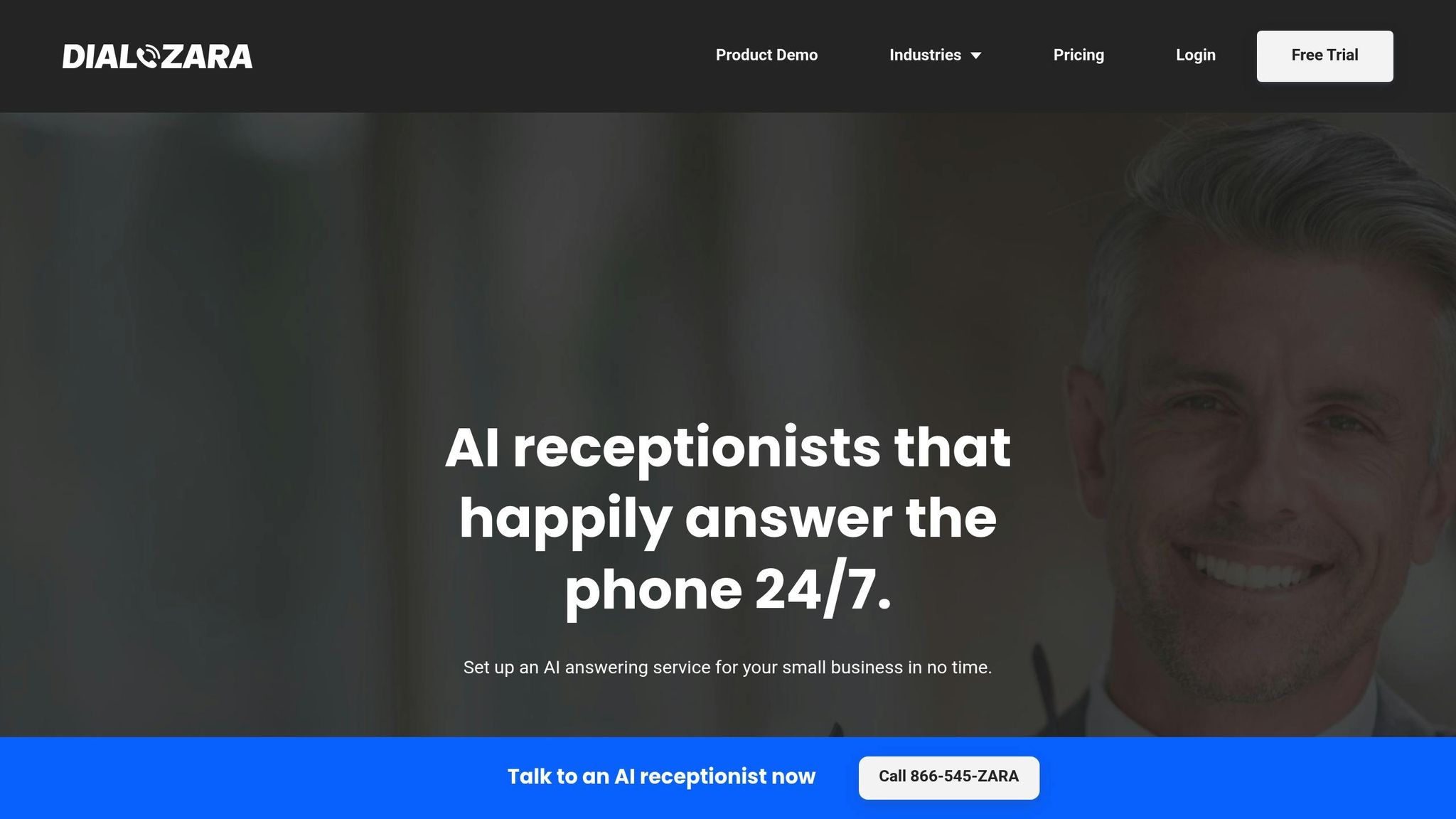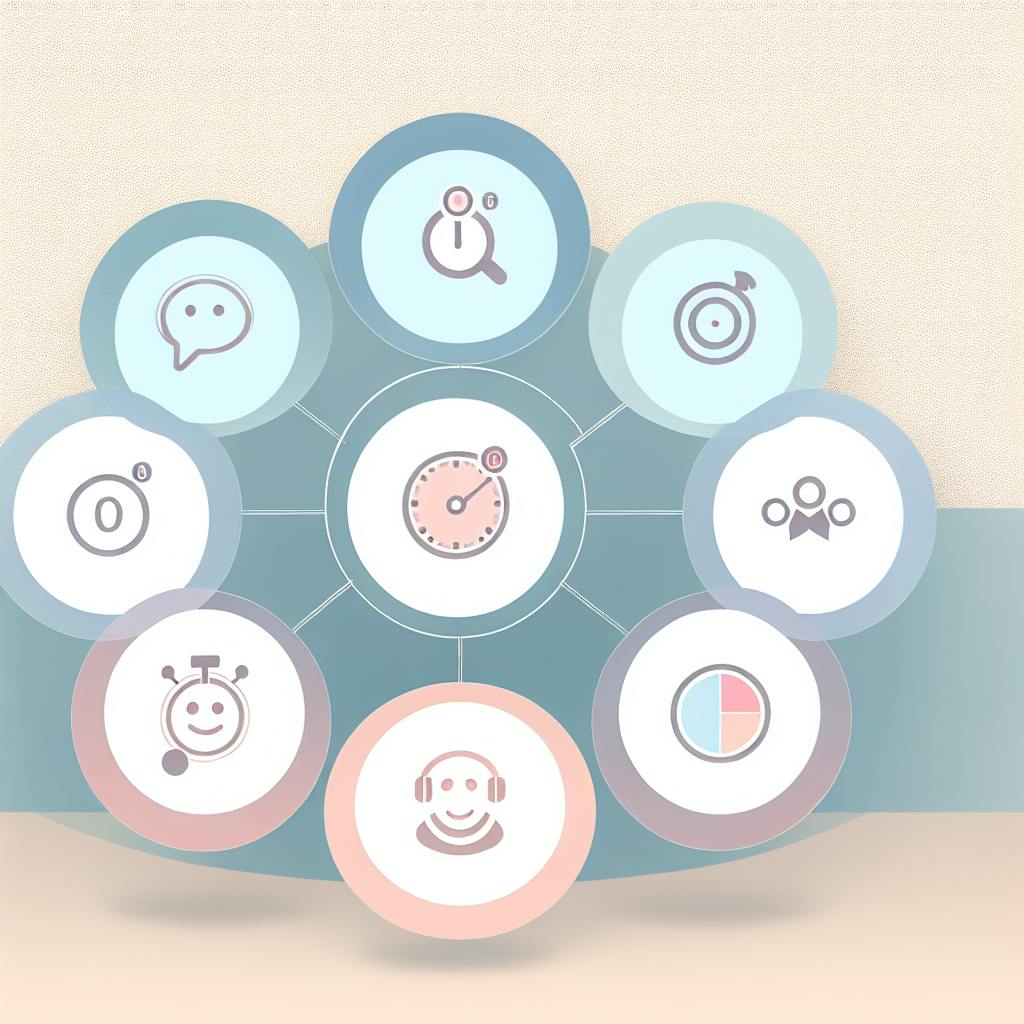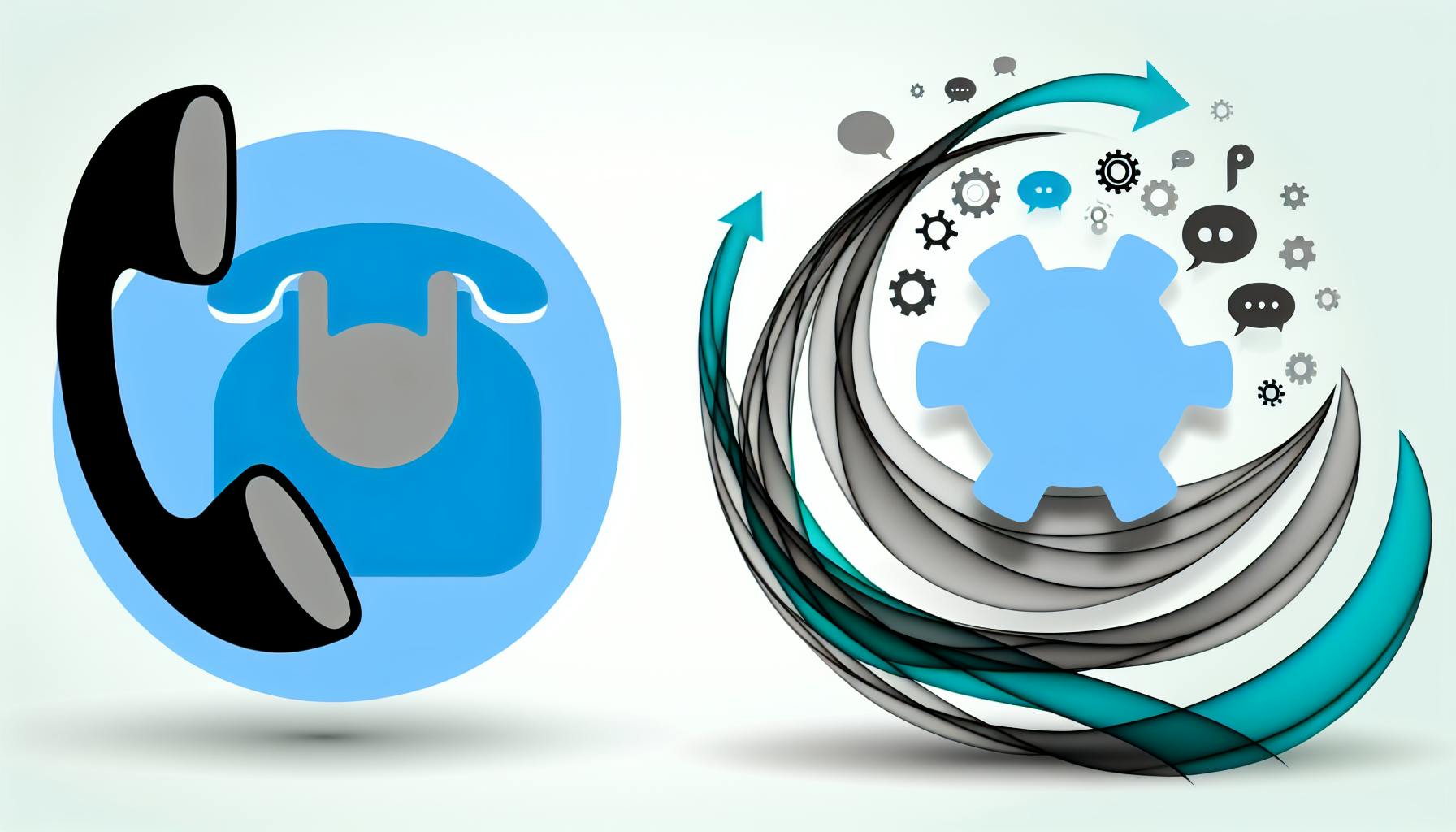AI workflow automation can cut client onboarding time by 40%, reduce errors by 30%, and save up to 28% in costs. Manual onboarding is slow, error-prone, and expensive, taking 40–80 hours per client. AI tools like Dialzara streamline the process by automating data collection, compliance checks, and follow-ups, operating 24/7 without extra staff. Here's a quick comparison:
| Aspect | Manual Onboarding | AI-Driven Onboarding |
|---|---|---|
| Processing Speed | 2–4 weeks | 40% faster |
| Error Rate | High | 30% fewer errors |
| Cost Savings | High operational costs | Saves up to 28% |
| Scalability | Requires more staff | Handles growth easily |
| Availability | Limited to business hours | 24/7 |
AI onboarding boosts efficiency, reduces costs, and improves client satisfaction, but requires upfront investment and may lack the personal touch of human interaction.
1. Manual Client Onboarding Methods
Traditional client onboarding methods rely heavily on human interaction, requiring significant time and coordination between staff and new clients. While this approach allows for personal interaction, it also introduces inefficiencies and potential errors.
Information Collection
Gathering client information manually often involves a mix of phone calls, email threads, and paper-based forms. Staff members typically conduct intake interviews to collect key details, but this process can be slow and prone to errors. Misunderstandings or missing information often lead to repeated clarifications, further delaying progress.
For industries with strict compliance requirements, like financial institutions, the process becomes even more complex. Incorporating Know Your Customer (KYC) and Anti-Money Laundering (AML) checks is mandatory, adding another layer of manual effort to the onboarding process. These time-consuming methods can create bottlenecks, making efficiency and accuracy hard to maintain.
Process Efficiency
Without automation, the onboarding process varies from one staff member to another, creating inconsistent client experiences. Tasks like finalizing legal documents, setting up communication channels, and scheduling follow-ups can stretch the timeline for account setup to two to four weeks.
The lack of standardized workflows and clear visibility into progress further complicates matters. Both clients and internal teams often struggle to track where things stand, leading to delays and frustration. These inefficiencies not only slow down the process but also increase the likelihood of mistakes.
Error Handling
Manual onboarding is especially vulnerable to human error. Steps can be overlooked, data can be entered incorrectly, and miscommunication is common. Fixing these mistakes often requires multiple interactions with the client, which can strain the relationship before it even begins.
The stakes are high - 32% of customers will leave a company after just one negative experience. This highlights how crucial it is to minimize errors during the onboarding phase to ensure a smooth start for new clients.
Cost Effectiveness
Manual onboarding comes with hidden expenses that can add up quickly. Inefficiencies in the process can eat into a company’s revenue, costing as much as 20–30% annually. Extended timelines, resource-heavy workflows, and frustrated clients all contribute to these losses.
As client volume grows, businesses often need to hire additional staff, which means more expenses for salaries, benefits, and training. Meanwhile, the time-intensive nature of manual onboarding limits the number of clients each team member can manage.
However, companies that have streamlined their onboarding processes have seen dramatic improvements. For example, Epion Health reduced its average onboarding timeline by 60 days, cutting overhead costs and recovering lost revenue. Similarly, Kount increased its capacity by 40% after improving its onboarding efficiency. Long delays and inconsistent experiences not only hurt a company’s bottom line but also damage its reputation, making it harder to attract and retain clients in a competitive market.
2. AI-Driven Workflow Automation (e.g., Dialzara)

AI-powered workflow automation is transforming client onboarding by analyzing data in real time, speeding up processes, and creating tailored experiences for customers.
Information Collection
AI systems simplify the collection of client information by pulling data from various sources like emails, PDFs, and scanned forms, eliminating the need for manual input. These systems analyze customer behavior and preferences, allowing businesses to adjust onboarding processes to meet individual needs.
Take Dialzara, for example - a phone-based AI agent that operates 24/7 to handle client intake calls. This AI agent screens callers, collects essential details, and performs initial assessments without human involvement. The result? A consistent, efficient process that reduces the workload for staff. Clients who went through this personalized onboarding reported a 67% boost in satisfaction compared to more generic approaches. This level of automation ensures faster data collection and smoother processing.
Process Efficiency
AI significantly speeds up tasks like document processing, data extraction, identity verification, and initiating follow-up actions. These systems can cut onboarding times by as much as 40%. Compliance checks are also quicker, as AI cross-references databases and verifies client identities with minimal input from staff. Additionally, AI can predict client needs based on past data, preparing documents and next steps before clients even ask.
"Implementing AI to improve operational efficiency is really important for MSPs... The more we can automate and be efficient, the more growth and clients we can take on with the same amount of staff."
– Roger Michelson, CEO, BNMC
By automating these workflows, businesses can reduce the time and effort needed for onboarding by up to 80%. This efficiency leads to a 60% faster cycle, helping companies bring in revenue more quickly while keeping clients satisfied.
Error Handling
AI automation reduces errors by using advanced pattern recognition and quality control tools. These systems learn from past data, spotting inconsistencies that humans could overlook. They can also detect fraudulent documents or discrepancies, lowering the risk of onboarding clients with false identities. This approach has been shown to reduce errors in client documentation by about 30%.
AI tools can also merge duplicate records and clean up data automatically, ensuring accuracy for compliance and risk assessments.
"Manual data processes are error prone for many reasons, and in worst case scenarios, the wrong entity could be onboarded entirely, causing unforeseen risk and major delays."
– Nelson Cardoso, Senior Product Manager, NICE Actimize
By turning manual workflows into efficient, error-resistant systems, AI ensures high levels of accuracy while processing large volumes of information. This not only improves reliability but also helps lower operational costs.
Cost Effectiveness
AI automation offers significant cost savings, reducing expenses by 20–28% and scaling easily as businesses grow. Tools like Dialzara can cut costs by up to 90% compared to hiring additional staff. Operating around the clock without breaks, these systems provide financial benefits while maintaining consistent performance.
Companies that use AI strategically can achieve up to three times the return on investment. Effective AI onboarding also boosts client retention rates by as much as 30%. Businesses with clear AI strategies are 1.5 times more likely to exceed their goals. Additionally, AI can handle 70% of repetitive tasks and 80% of routine queries, freeing up employees to focus on higher-value work while ensuring consistent service quality day and night.
sbb-itb-ef0082b
Pros and Cons
Expanding on the earlier discussion about manual versus AI-driven onboarding, it’s essential to explore the practical advantages and challenges that come with each approach. Both methods influence operational efficiency, costs, and customer satisfaction in unique ways. Understanding these differences is key to determining the right fit for a business.
Manual onboarding emphasizes personal connection and empathy, which can be invaluable for building trust. However, it often involves repetitive tasks and slower processing times, leading to delays and inefficiencies.
AI-driven onboarding, on the other hand, tackles these inefficiencies head-on. By automating workflows, AI can reduce processing time by 40% and cut documentation errors by 30%. The financial impact is noteworthy too - businesses report saving over $18,000 annually and cutting associated costs by 38%. For instance, Dialzara has managed to reduce operational costs by up to 90% while maintaining 24/7 availability.
That said, AI isn’t without its hurdles. Implementing these systems often requires a significant upfront investment in technology and staff training. Additionally, not all customers feel comfortable with AI - especially older generations. While 31% of younger consumers express trust in AI, only 8% of those aged 55 and older share the same sentiment. Another limitation is that AI systems often lack the emotional intelligence needed to address complex or sensitive customer issues.
"AI workflow automation has the power to reshape how businesses operate, unlocking unprecedented levels of efficiency and productivity."
– Anna Zur, Creatio
Despite these challenges, AI onboarding delivers impressive results. It can reduce processing time by 53% and improve new hire performance by 40%. Companies using AI onboarding report an 82% increase in new hire retention and a 75% reduction in administrative workload for HR teams.
Here’s a side-by-side comparison of the two approaches:
| Aspect | Manual Onboarding | AI-Driven Onboarding |
|---|---|---|
| Processing Speed | Slow, labor-intensive | 53% faster completion time |
| Error Rate | Higher likelihood of mistakes | 30% fewer documentation errors |
| Annual Cost Savings | Higher operational expenses | Over $18,000 saved per year |
| Availability | Limited to business hours | Operates 24/7 |
| Scalability | Requires more staff | Handles increasing volumes easily |
| Personalization | Strong emotional connection | Limited to pre-programmed responses |
| Compliance Checks | Manual verification required | Automated regulatory compliance |
| Staff Workload | High administrative burden | 75% reduction in HR tasks |
Striking the right balance between these methods often involves combining the strengths of both. AI excels at handling repetitive tasks and scaling operations efficiently, while human oversight ensures empathy and adaptability for more nuanced situations.
Security and compliance are also critical considerations. AI systems require robust data protection measures and frequent updates to stay ahead of evolving threats. On the plus side, they offer enhanced fraud detection, with identity verification accuracy exceeding 99%, compared to 97% for manual processes.
Ultimately, the choice between manual and AI-driven onboarding depends on a company’s priorities, customer base, and resources. Businesses focused on rapid growth and cost efficiency may lean toward AI solutions, while those prioritizing personal engagement might favor a hybrid approach that blends automation with human insight. These factors highlight the dynamic landscape of onboarding strategies discussed earlier.
Conclusion
AI-powered onboarding is reshaping how businesses operate and interact with customers. Companies leveraging AI in their onboarding processes report impressive results, including a 40% reduction in processing time and 30% fewer documentation errors. These improvements also lead to tangible business outcomes, such as a 25% boost in customer retention and a 30% increase in conversion rates.
One of AI’s strongest advantages is its ability to handle high volumes of tasks without the need for additional staff. Unlike manual processes that demand proportional increases in resources as workload grows, AI solutions like Dialzara manage expanding customer interactions seamlessly while maintaining quality. With round-the-clock availability and consistent service delivery, businesses gain an edge that traditional methods simply can't provide. This scalability highlights the importance of implementing AI thoughtfully and strategically.
However, success isn’t just about efficiency - it’s about balance. Combining AI’s speed and accuracy with human oversight ensures that complex cases are handled effectively, creating a superior experience for clients. This blend of technology and human expertise far surpasses the capabilities of traditional methods.
For businesses considering this shift, the real question is no longer if AI should be adopted, but how quickly it can be integrated. With 86% of financial services leaders acknowledging AI as essential to their success, early adopters stand to gain a strong competitive advantage.
To start, focus on automating processes where AI can deliver immediate results. Ensure access to high-quality data and invest in training your team to maximize the technology’s potential. This approach can lead to efficiency gains of 30–40% and cost reductions of 25–50%.
AI workflow automation isn’t just a trend - it’s a necessity for businesses aiming to grow, streamline operations, and improve customer satisfaction. By adopting AI-driven solutions today, companies can position themselves for long-term success.
FAQs
How does AI workflow automation make client onboarding faster and more accurate than manual processes?
AI workflow automation is revolutionizing client onboarding by making it faster and more accurate. Tasks like data entry and document verification are handled with precision, ensuring critical details - like IDs or proof of address - are captured and processed without errors. This eliminates the manual mistakes that often lead to delays or compliance headaches.
On top of that, AI dramatically shortens onboarding times. Companies can now onboard clients up to 90% faster while still delivering top-notch service. This increased efficiency not only improves the overall customer experience but also allows businesses to handle a growing number of clients with ease.
What steps should a business take to successfully implement AI-powered onboarding solutions like Dialzara?
To make the most of AI-powered onboarding tools like Dialzara, start by pinpointing your business's specific needs and goals. Think about which tasks - like handling calls, managing client intake, or scheduling appointments - could benefit the most from automation. This way, the AI solution will align with your objectives and help simplify your onboarding process.
Once you've identified your goals, focus on preparing your team. Provide thorough training so they understand how to integrate and use the AI tool effectively. Clear communication about the tool's purpose and what it can do will help build confidence and encourage teamwork. Also, don't forget to address data privacy regulations. Be upfront about how client information will be collected, stored, and used. This level of transparency not only ensures compliance but also fosters trust with both your employees and clients, making the transition to AI-driven onboarding much smoother.
How can businesses use AI automation to streamline client onboarding while keeping interactions personalized?
Businesses can merge AI automation with personalization by letting AI tackle repetitive tasks while dedicating more attention to crafting unique experiences for each client. By analyzing customer data, AI can adapt onboarding steps to match individual needs, making the process feel both relevant and personalized.
For instance, AI tools can sort clients based on their behavior or preferences, creating onboarding flows tailored to their specific requirements. At the same time, AI-powered assistants can provide round-the-clock support, quickly addressing routine questions. This allows human agents to concentrate on more intricate or sensitive matters. Striking this balance improves efficiency while maintaining a personal touch, resulting in a smoother onboarding journey and stronger client connections.


